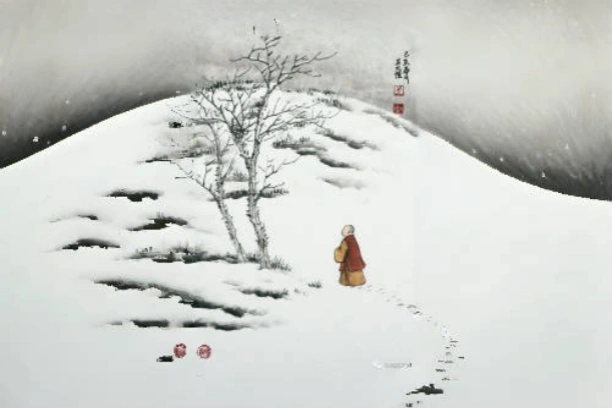
The door of Ch’an is entered by Wu. When we meditate on Wu we ask “What is Wu?” On entering Wu, we experience emptiness; we are not aware of existence, either ours or the world’s.
E-MAIL: admin@relaxmid.com

The door of Ch’an is entered by Wu. When we meditate on Wu we ask “What is Wu?” On entering Wu, we experience emptiness; we are not aware of existence, either ours or the world’s. This is an elementary level of Wu; if it is enlightenment, it is shallow enlightenment. When we go deeper, everything exists again. We discover that the mind reflects everything. This is a deep level of Wu.
Into enlightenment, there is emptiness. Out of enlightenment, there is existence. These phrases are not easy to understand. When we enter Wu, what are we seeking? Nothing. Nothing can be pursued or sought. Thus it is Wu, “nothing” or “there is not.” But when one is deeply enlightened, what happens? At that time, there is nothing in life that confuses, misleads, or poses any problem. One is as expansive as time and space. Thus we say that entering the realm of Wu, there is emptiness; going deeper into Wu, one returns to existence. Emptiness and existence are not two separate things. They are just one thing. Fundamentally, Wu is the same as existence. If there is existence in deep enlightenment, is there also self? Indeed there is. If self didn’t exist you wouldn’t be able to do anything. What has been removed is ego, which has the sense of always being “for oneself.” In truth, it is the attachment to self that has vanished.
Therefore, you should not think that the self ceases to exist with enlightenment. The enlightened self exists on behalf of all things. However, at the deepest levels of enlightenment one does not exist in behalf of anything; one just exists.
In Buddhism we often speak of the enlightened state as “no self” because we have no better words for it. What this phrase says is that, at this stage, existence does not rely on self, others, or anything. It is a spontaneous, natural existence. Accordingly, one helps sentient beings. Not for the sake of self, not for the sake of others; one just naturally helps sentient beings.
Deeply enlightened persons need not maintain any particular identity; they have no need for position or place. Nor is it necessary for them to adopt an identity in accordance with the sentient being they are helping. The bodhisattva has no particular point of view. Like a mirror, he is only a reflection of sentient beings. He does not say, “I will behave in this or that way to help people.” He reflects the problems and attitudes of sentient beings, but fundamentally these problems don’t exist for him. Otherwise, he would need a point of view. When one exists neither for oneself nor for others, but just naturally helps sentient beings, this is called “no function.” If I were to have a particular point of view, then it wouldn’t be “no function.” When you think of function, you’re still thinking in terms of “in order to…” So we say “no function.” This is Wu, emptiness.
PREVIOUS: KUNG-AN PRACTICE | Getting The Buddha Mind
NEXT: THE STAGES OF ENLIGHTENMENT | Getting The Buddha Mind
